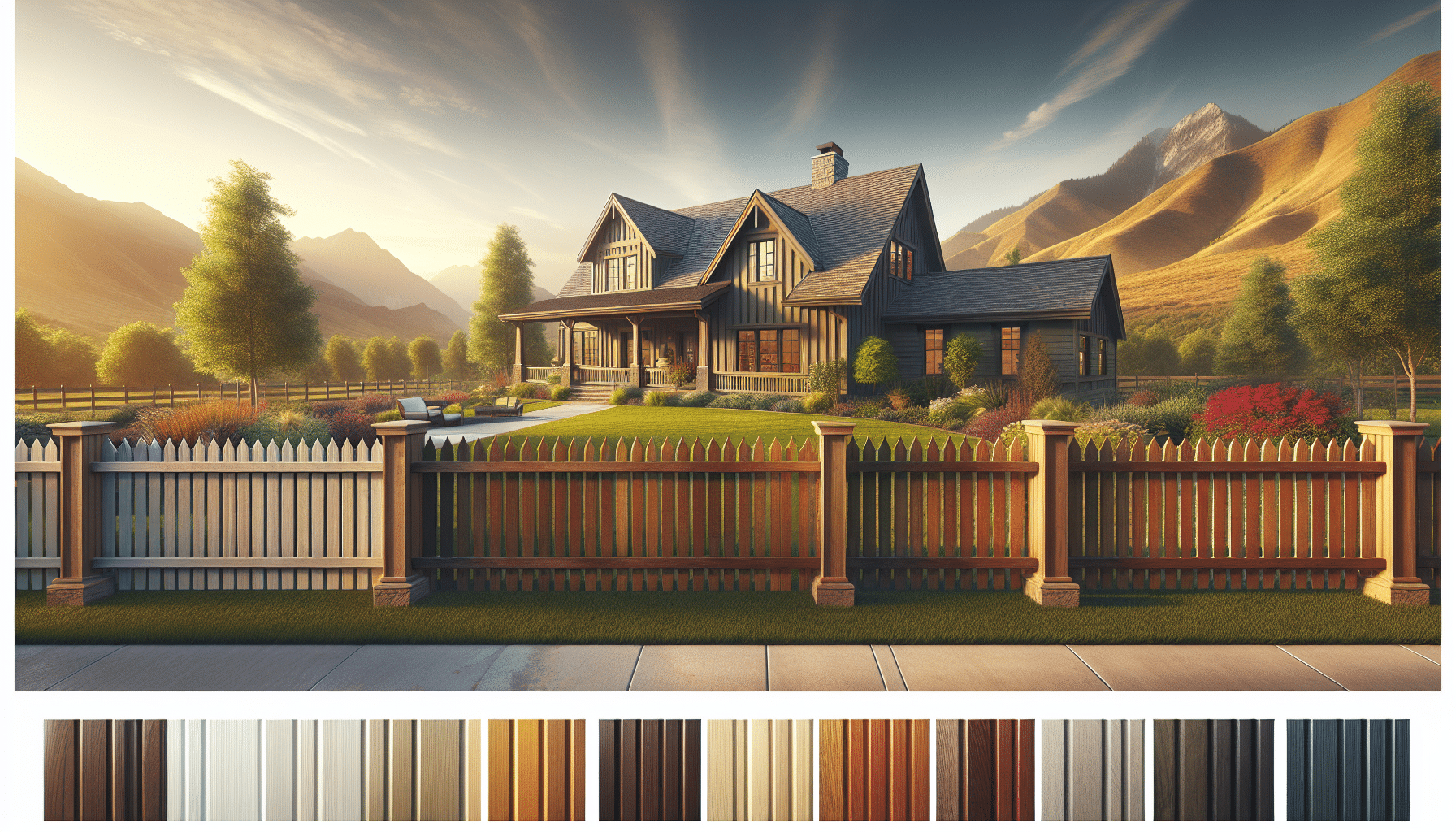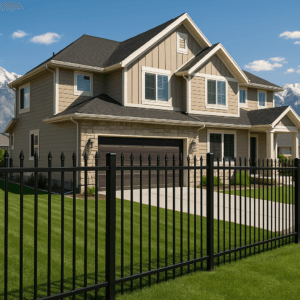Choosing the ideal finish for your Wood picket fence is essential to enhancing both its beauty and longevity. At Logan Fence Company, we understand that selecting the right finish can be overwhelming with so many options available. This article is here to guide homeowners through the process, ensuring their fence remains a stunning element of their property for years to come. Whether you’re new to the world of fencing or just need a little assistance, we’re here to help.
Contents
Understanding the Importance of Fence Finish
When it comes to preserving the charm of a wood picket fence, the finish plays a crucial role. A well-chosen finish not only accentuates the natural beauty of wood but also guards against the elements. Utah’s varying climate can be harsh on unprotected wood, making it essential to select a finish that defends against rain, snow, and UV rays. Ultimately, the right finish safeguards your investment while keeping the fence attractive.
In addition, finishes add layers of depth and color, allowing you to match or complement the overall aesthetic of your home. The finish can turn an ordinary fence into a personalized masterpiece. With a little knowledge and understanding, selecting the perfect finish can be a delightful experience rather than a daunting task.
Types of Finishes Available
Understanding the different types of finishes can streamline the decision-making process. Essentially, the most popular types include stains, paints, and sealers, each offering unique advantages. Stains offer both penetration and tint, highlighting wood grains and offering some protection. On the other hand, paint provides an opaque coating, creating a uniform appearance while protecting the wood beneath. Sealers, while invisible, enhance durability by repelling water and minimizing UV damage.
Some homeowners even choose to combine these finishes for added protection and aesthetic value. Whether using a stain with a sealer or paint with a water repellant, the combination should be thoughtfully considered based on both desired looks and environmental exposure. Keep reading as we delve deeper into these types and help you identify the best fit for your needs.
Exploring Stain Options
Stains are a popular choice for homeowners aiming to maintain the natural appearance of wood. These come in various types, such as oil-based and water-based options, each offering distinct benefits. Oil-based stains penetrate deeply into the wood fibers, which can help protect against moisture and enhance the wood’s longevity. They’re also known for rich color and durability.
Alternatively, water-based stains are environmentally friendly and dry quicker, which means you’ll enjoy the finished look sooner. They also offer easy cleanup compared to their oil-based counterparts. Regardless of the type, stains generally provide a semi-transparent finish, allowing the beautiful wood grain to shine through while still adding a hue to complement your surroundings.
The Perks of Painting
For those seeking a bold or specific color, painting is your go-to option. Paint completely covers the wood surface, offering maximum protection from environmental factors. A high-quality exterior paint can protect the fence from UV rays, rain, and other harsh weather conditions, making it a long-lasting choice.
Moreover, the color spectrum with paint is almost endless, allowing creativity to flow. Whether you prefer traditional white pickets or a vibrant expression, paint provides endless opportunities to enhance curb appeal. Remember, proper surface preparation is vital before painting to ensure the paint adheres well and lasts longer.
Sealers: Invisible Guardians
Sealers are an excellent choice for those who love the natural look of wood and wish to preserve it. These finishes create a protective barrier against moisture without altering the fence’s color. If your area is prone to heavy rain or snow, using a sealer can significantly extend the life of your fence.
Apart from water resistance, many sealers come with UV protectants to prevent sun damage. Applying a sealer is a straightforward task, and it usually has a quick drying time. Choosing a sealer means embracing the authentic characteristics of the wood while ensuring it stays looking great for years to come.
Combining Finishes for Best Results
Sometimes, the best results come from combining different finish types. This approach provides enhanced protection and can meet multiple aesthetic or functional needs. For example, applying a stain followed by a clear sealer boosts the wood’s beauty and ensures dual-layer protection from moisture and UV rays.
Combining a paint with a water-repellent sealer is another strategy for those in areas with frequent wet conditions. However, it’s essential to ensure compatibility between products and possibly consult with professionals for optimal application techniques.
Factors to Consider
When selecting a fence finish, several factors must be considered. Here are some essential points to guide your decision-making:
- Climate: Evaluate local weather patterns to choose a finish that can withstand environmental stresses.
- Maintenance: Consider the upkeep required with each finish type, ensuring it aligns with your commitment to fence maintenance.
- Aesthetic Preferences: Decide whether you prefer to enhance the wood’s natural grain or add a bold splash of color.
- Protection Needs: Assess the level of protection required based on geographical location and exposure to the elements.
- Budget: Weigh different products’ costs against their benefits to find a finish that fits your budget without compromising quality.
A Step-by-Step Application Guide
Applying the finish yourself can be a rewarding experience if you prefer a hands-on approach. Begin by thoroughly cleaning the fence to remove any dirt, mildew, or old finish. Next, repair any damaged areas, and sand the surface if necessary for smooth application. For stains and sealers, use a brush or sprayer for even coverage, following the grain of the wood for the best results.
When painting, start with a primer to ensure the paint adheres properly, followed by at least two coats of your chosen color. Allow sufficient drying time between coats to avoid a sticky finish. Cleaning tools promptly after use will ensure they remain in good condition for future projects.
Long-Term Maintenance Tips
To keep your fence looking splendid, regular maintenance is key. Inspect the fence periodically for signs of wear or damage, such as peeling paint, faded stain, or missing sealer. Addressing minor issues promptly can prevent larger, more costly repairs down the line.
Reapplication schedules may vary depending on the finish type and climate exposure, with paints typically lasting longer but requiring thorough prep work for touch-ups. Meanwhile, stains and sealers may need more frequent applications to maintain their protective benefits and visual appeal.
Conclusion
In conclusion, selecting the right finish for your wood picket fence is a blend of art and science. Contact us at Logan Fence Company at 435-383-5152 or Request a Free Quote if you need expert advice or services.




